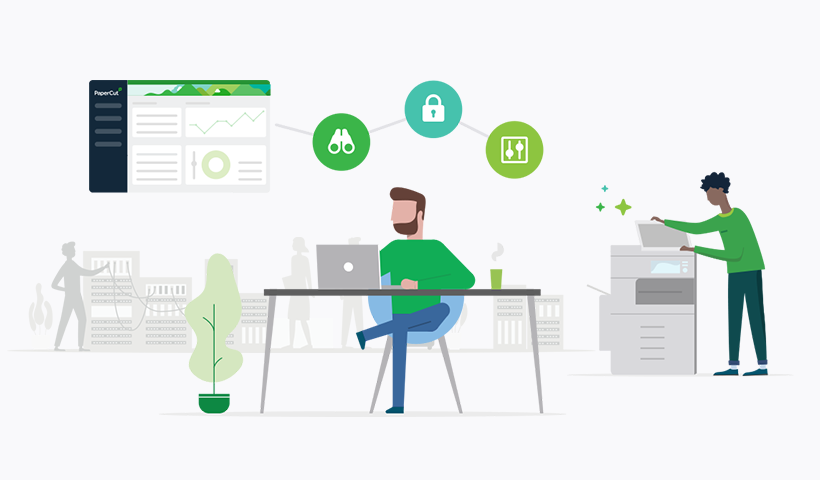Most organizations know that they print. But not every workplace knows who is printing… or how much they print… or if they’re always printing colour… or never printing double-sided… or even how much they’re spending every year on printing…
To know all those things, you need print management software with reporting capabilities. This way, you can monitor printing activities and analyze in-depth print data to gain insights into printing costs and usage patterns.
Without print reporting, your print environment is essentially blindfolded. With print reporting, you have ultimate visibility and control so that all the printing in your workplace is purposeful and sustainable.
Why print reporting matters
Printing can be expensive. It’s essential to understand how much it costs your business. Print reporting provides valuable insights into printing costs and usage patterns, allowing you to make informed decisions about printing and control costs. But more than that, these reports can be automated so that regular usage reports can be in the front of the eyeballs of end-users and administrators.
Cost control
Track printing costs and identify areas where you can reduce costs. By monitoring printing activities and analyzing print data, you can identify inefficient printing practices and take action to reduce printing costs.
Resource management
Get full view of printing resource usage, such as ink and paper. By understanding how resources are being used, you can take steps to optimize resource usage and reduce waste.
Security and compliance
Monitor printing activities and identify any unauthorized printing to prevent data breaches and protect sensitive information. Print reporting can also provide advanced features helping your organization comply with regulations and policies related to printing, like GDPR and HIPAA. By tracking printing activities and generating reports, you can demonstrate compliance with regulations and policies.
How to get started with print reporting
Not for one second am I saying you need to go to every single printer and generate individual device reports for your workplace.
Essentially, you need to find the right software that will generate all the reports that you want.
Choose a print management solution
Shamless plug time. Print reporting is the bedrock of print management software. And you are on a print management software blog. So strap yourself in for some self-serving promotion. But, in all honesty, your first step in print reporting is choosing a print management solution. You can do so by reading our ‘how to choose a print management vendor’ blog .
Install and configure print management software
Once you’ve chosen a print management solution, (ahem, I hope you chose us) the next step is to install and configure the software. This involves setting up user accounts, configuring printers, and setting up printing rules.
Monitor printing activities
Once your shiny new print management software (*cough* PaperCut software *cough*) is installed and configured, you can begin monitoring printing activities. The software will track printing activities, such as the number of pages printed, the printer used, and the user who printed the document.
Generate reports
Collect and produce all that juicy data into actionable intelligence. Generate reports on user behavior, device usage, group and shared account print volumes, and print consumable costs. With these valuable insists into printing activities and behaviors, your organization can manage and control your printing, rather than just flinching each month when you see the bill for ink, toner, and paper usage.
Control your printing in full-view
Data presentation is essential for interpreting, acting upon, and sharing information collected through logs.
Print reporting provides visibility of your print environment. This end-to-end transparency means there are no secrets. You can catch uncontrolled printing and bring it back under control. Print management software at its core provides visibility and clarity over the who, what, when, where, why, and how of your organization’s printing.
By monitoring printing activities and analyzing print data, you can gain insights into printing costs and usage patterns, and take action to control costs, optimize resource usage, and improve security and compliance.


